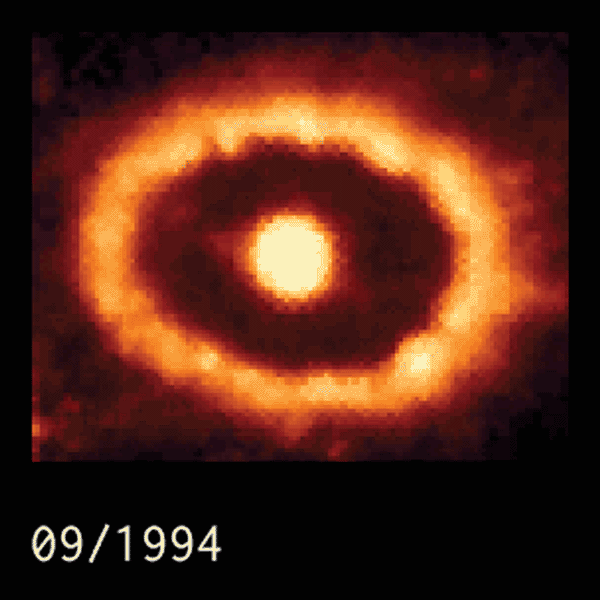
|
Explanation: Twenty five years ago, the brightest supernova of modern times was sighted. Over time, astronomers have watched and waited for the expanding debris from this tremendous stellar explosion to crash into previously expelled material. A clear result of such a collision is demonstrated in the above time lapse video of images recorded by the Hubble Space Telescope between 1994 and 2009. The movie depicts the collision of an outward moving blast wave with the pre-existing, light-year wide ring. The collision occurred at speeds near 60 million kilometers per hour and shock-heats the ring material causing it to glow. Astronomers continue to study the collision as it illuminates the interesting past of SN 1987A, and provides clues to the origin of the mysterious rings.
Gallery:
Jupiter-Venus-Moon Conjunction
|
January February March April May June July August September October November December |
| ||||||||||||||||||||||||||||||||||||||||||||||||
NASA Web Site Statements, Warnings, and Disclaimers
NASA Official: Jay Norris. Specific rights apply.
A service of: LHEA at NASA / GSFC
& Michigan Tech. U.
Based on Astronomy Picture
Of the Day
Publications with keywords: supernova - shock
Publications with words: supernova - shock
See also:
- APOD: 2025 July 31 Á Supernova 2025rbs in NGC 7331
- APOD: 2023 October 11 Á NGC 1097: Spiral Galaxy with Supernova
- APOD: 2023 July 9 Á Doomed Star Eta Carinae
- APOD: 2023 May 22 Á Supernova Discovered in Nearby Spiral Galaxy M101
- Supernova Cannon Expels Pulsar J0002
- SN Requiem: A Supernova Seen Three Times So Far
- NGC 7814: Little Sombrero with Supernova
